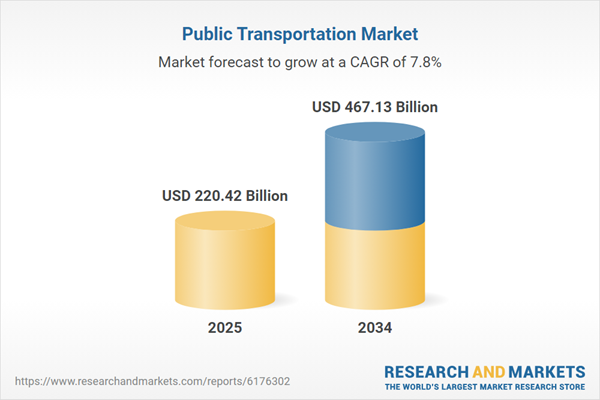Report on the Transboundary Movement of Electronic Waste and its Impact on Sustainable Development Goals
Executive Summary
A recent investigation by the Basel Action Network (BAN) reveals a significant flow of electronic waste (e-waste) from the United States to developing nations, particularly in Southeast Asia. This practice transfers a substantial environmental and health burden, directly contravening the principles of several Sustainable Development Goals (SDGs). The report identifies at least 10 U.S. companies exporting hazardous electronic materials to countries ill-equipped for their safe disposal, undermining global efforts towards sustainable development.
The Scale of the E-Waste Crisis and its Conflict with SDG 12
The global generation of e-waste demonstrates a critical failure in achieving sustainable consumption and production patterns, a core target of SDG 12 (Responsible Consumption and Production). The unregulated export of this waste from developed nations exacerbates the problem.
- Global Production: The world generated a record 62 million metric tons of e-waste in 2022, a figure projected to reach 82 million by 2030.
- Insufficient Recycling: The volume of e-waste is growing five times faster than documented formal recycling rates.
- U.S. Export Volume: An estimated 2,000 containers, equivalent to approximately 33,000 metric tons of used electronics, are shipped from U.S. ports monthly.
- Economic Value: The trade from the 10 identified companies alone is valued at over $1 billion, indicating a lucrative industry built on unsustainable practices.
Environmental and Health Impacts in Recipient Nations: A Threat to SDGs 3, 6, 11, 14, and 15
The destination countries for U.S. e-waste face severe consequences that impede progress on key environmental and health-related SDGs.
- Violation of SDG 3 (Good Health and Well-being): Informal workers, often without protective equipment, dismantle or burn e-waste, releasing toxic fumes from materials like lead, cadmium, and mercury, leading to severe health risks.
- Violation of SDG 6 (Clean Water and Sanitation): Hazardous materials from e-waste dumped in landfills leach into the soil and groundwater, contaminating water sources and threatening public health.
- Violation of SDG 11 (Sustainable Cities and Communities): The accumulation of toxic waste in and around communities makes them unsafe and environmentally unsound.
- Violation of SDG 14 (Life Below Water) and SDG 15 (Life on Land): The persistent pollution from toxic metals degrades local ecosystems, harming both terrestrial and aquatic biodiversity.
Systemic Failures in Governance and Corporate Responsibility: Undermining SDGs 8 and 16
The investigation highlights significant failures in international governance, national regulation, and corporate ethics, which are fundamental to achieving justice and decent work for all.
- Weak Institutional Frameworks (SDG 16): The United States remains the only industrialized nation not to have ratified the Basel Convention, an international treaty designed to prevent the trade of hazardous waste. This institutional gap allows for the legal and quasi-legal export of e-waste to countries like Malaysia, a primary destination, overwhelming its capacity to manage the influx.
- Deceptive Trade Practices (SDG 16): Exporters frequently mislabel e-waste shipments with incorrect trade codes, such as “commodity materials,” to circumvent import bans and regulations, undermining the rule of law.
- Failure of Corporate Accountability (SDG 8 & 12): Eight of the ten identified exporting companies hold R2V3 certifications, an industry standard for responsible recycling. This suggests that current certification schemes are inadequate for preventing harmful practices and ensuring safe, decent work conditions in the global recycling chain.
Identified Parties and Destinations
The report names specific entities involved in this trade, highlighting the global nature of the e-waste supply chain.
Companies Identified in the Report
- Attan Recycling
- Corporate eWaste Solutions (CEWS)
- Creative Metals Group
- EDM
- First America Metal Corp.
- GEM Iron and Metal Inc.
- Greenland Resource
- IQA Metals
- PPM Recycling
- Semsotai
Primary and Secondary Destinations
- Malaysia (Primary)
- Indonesia
- Thailand
- The Philippines
- United Arab Emirates (UAE)
Conclusion: A Call for Global Partnership (SDG 17)
The unregulated export of e-waste from the U.S. constitutes a significant “pollution transfer” that shifts the environmental and social costs of consumption to developing nations. Addressing this challenge is critical for the integrity of the entire 2030 Agenda for Sustainable Development. Achieving a solution requires a renewed commitment to SDG 17 (Partnerships for the Goals), through which international cooperation can be strengthened to enforce treaties, promote corporate accountability, and ensure that the management of e-waste supports, rather than undermines, global sustainability and environmental justice.
SDGs Addressed in the Article
Explanation
The article on the export of electronic waste (e-waste) from the United States to developing countries in Southeast Asia touches upon several Sustainable Development Goals. The core issues of hazardous waste management, environmental pollution, public health risks, unsafe labor practices, and illicit international trade directly connect to the global agenda for sustainable development.
- SDG 3: Good Health and Well-being: The article highlights significant health risks associated with improper e-waste disposal. It mentions that informal workers dismantle devices “without protection, releasing toxic fumes” and that toxic metals like “lead, cadmium and mercury” are “leaching toxic chemicals into the environment,” which can contaminate water and soil, posing a threat to public health.
- SDG 8: Decent Work and Economic Growth: The practice of dismantling e-waste in “informal scrapyards” where workers operate “by hand, often without protection” points to a lack of decent and safe working conditions. This directly contradicts the goal of promoting safe and secure working environments for all.
- SDG 11: Sustainable Cities and Communities: The dumping of e-waste in landfills and the operation of informal recycling sites in or near communities in developing nations create significant environmental hazards. This undermines the goal of creating safe, resilient, and sustainable human settlements by increasing the adverse per capita environmental impact of cities through improper waste management.
- SDG 12: Responsible Consumption and Production: This is the most central SDG to the article. The “hidden tsunami of electronic waste” is a direct result of unsustainable patterns of consumption and production. The article discusses the massive generation of e-waste (“62 million metric tons in 2022”), the failure to manage it responsibly, and the externalization of the problem from a developed country to developing ones.
- SDG 14 (Life Below Water) and SDG 15 (Life on Land): The article states that toxic chemicals from e-waste are “leaching… into the environment.” This contamination of soil and water systems directly threatens terrestrial and aquatic ecosystems, harming biodiversity and the health of both life on land and life below water.
- SDG 16: Peace, Justice and Strong Institutions: The article exposes weaknesses in governance and legal frameworks. It notes that the U.S. is the “only industrialized nation yet to ratify” the Basel Convention, an international treaty on hazardous waste. Furthermore, it describes how shipments are “declared under trade codes that did not match those for electronic waste… to evade detection,” which constitutes an illicit material flow and highlights a failure of justice and institutional enforcement.
- SDG 17: Partnerships for the Goals: The issue of transboundary e-waste movement is a global challenge that requires international cooperation. The article’s focus on the failure to adhere to international treaties like the Basel Convention underscores the breakdown in global partnerships needed to achieve sustainable development.
Specific SDG Targets Identified
Explanation
Based on the issues discussed, several specific SDG targets can be identified as directly relevant to the challenges posed by the e-waste trade.
- Target 3.9: By 2030, substantially reduce the number of deaths and illnesses from hazardous chemicals and air, water and soil pollution and contamination. The article’s description of workers inhaling “toxic fumes” and toxic metals “leaching” into the environment directly relates to this target of reducing harm from hazardous pollution.
- Target 8.8: Protect labour rights and promote safe and secure working environments for all workers. The mention of workers in “informal scrapyards” dismantling electronics “by hand, often without protection” clearly points to a failure to meet this target for a safe working environment.
- Target 11.6: By 2030, reduce the adverse per capita environmental impact of cities, including by paying special attention to air quality and municipal and other waste management. The article describes how Southeast Asian countries are being “overwhelmed” by e-waste, which is “dumped in landfills,” directly impacting waste management and the environmental quality of their communities.
- Target 12.4: By 2020, achieve the environmentally sound management of chemicals and all wastes throughout their life cycle, in accordance with agreed international frameworks, and significantly reduce their release to air, water and soil. The entire article is a case study on the failure to achieve this target, detailing how hazardous e-waste is not being managed soundly and is instead being shipped overseas, leading to environmental contamination.
- Target 12.5: By 2030, substantially reduce waste generation through prevention, reduction, recycling and reuse. The article provides statistics on the rapid growth of e-waste (“from 62 million metric tons in 2022… to 82 million by 2030”) and notes that it is “growing five times quicker than it’s formally recycled,” indicating a significant gap in achieving waste reduction and proper recycling.
- Target 16.4: By 2030, significantly reduce illicit financial and material flows. The report’s finding that e-waste shipments were “mislabeled” and “declared under trade codes that did not match those for electronic waste… to evade detection” is a direct example of the illicit material flows this target aims to reduce.
Indicators for Measuring Progress
Explanation
The article provides specific data and qualitative descriptions that can serve as or inform indicators to measure the scale of the problem and track progress towards the identified targets.
- Volume of Hazardous Waste Generated and Exported: The article provides concrete figures that can be used as indicators for Target 12.4. This includes the global generation of e-waste (“62 million metric tons in 2022”), projected increases (“82 million by 2030”), and the volume of U.S. exports (“About 2,000 containers — roughly 33,000 metric tons … leave U.S. ports every month”).
- National Recycling Rate: For Target 12.5, the article implies a low formal recycling rate by stating that “global e-waste is growing five times quicker than it’s formally recycled.” This ratio serves as a powerful indicator of the inadequacy of current recycling efforts.
- Value of Illicit Material Flows: The report estimates the value of potential e-waste exports from just 10 companies at “over $1 billion” and suggests the industry-wide trade “could top $200 million a month.” This monetary value is a direct indicator for Target 16.4, which tracks illicit flows.
- Adherence to International Agreements: A key qualitative indicator for Targets 12.4 and 16 is the status of ratification and implementation of international treaties. The article explicitly mentions that the U.S. is the “only industrialized nation yet to ratify” the Basel Convention, indicating a lack of commitment to the international framework for managing hazardous waste.
- Prevalence of Unsafe Working Conditions: For Target 8.8, the article provides a qualitative indicator by describing the conditions in “informal scrapyards” where workers dismantle devices “without protection.” Documenting the prevalence of such conditions would be a way to measure progress towards safer work environments.
Summary Table: SDGs, Targets, and Indicators
| SDGs | Targets | Indicators Identified in the Article |
|---|---|---|
| SDG 3: Good Health and Well-being | 3.9: Reduce illness and death from hazardous chemicals and pollution. | Qualitative evidence of exposure to “toxic fumes” and environmental leaching of “lead, cadmium and mercury.” |
| SDG 8: Decent Work and Economic Growth | 8.8: Protect labour rights and promote safe working environments. | Description of workers in “informal scrapyards” operating “by hand, often without protection.” |
| SDG 11: Sustainable Cities and Communities | 11.6: Reduce the adverse environmental impact of cities, especially in waste management. | Evidence of developing countries being “overwhelmed” by e-waste and its disposal in landfills. |
| SDG 12: Responsible Consumption and Production | 12.4: Achieve environmentally sound management of chemicals and all wastes. 12.5: Substantially reduce waste generation. |
– Total e-waste generated: “62 million metric tons in 2022.” – Transboundary movement of hazardous waste: “33,000 metric tons” exported from U.S. ports monthly. – Low recycling rate: Waste growing “five times quicker than it’s formally recycled.” |
| SDG 16: Peace, Justice and Strong Institutions | 16.4: Significantly reduce illicit financial and material flows. | – Evidence of shipments being mislabeled to “evade detection.” – Estimated value of illicit trade: “over $1 billion” from 10 companies; potentially “$200 million a month” industry-wide. |
| SDG 17: Partnerships for the Goals | Strengthen the means of implementation and revitalize the Global Partnership. | Non-ratification of the Basel Convention by the U.S., indicating a failure in global cooperation on hazardous waste. |
Source: nbcnews.com






